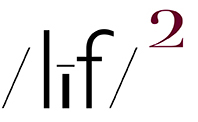(embiggenable)
(embiggenable)
(embiggenable)
THE TOPIC OF “WORKING THE SCENE” HAS COME UP ON TOP. My immediate inclination is to call BS. That’s cuz the idea of working a scene brings to (my) mind the notion of aimlessly firing a machine gun at a target in the hope that one of those bullets will hit the bullseye. Whereas I believe the best way to hit the bullseye is carefully considered aim, the bullseye firmly fixed in one’s sighting device, and a relaxed squeeze of the trigger.
OK. I apologize. Those last 2 sentences are a bit heavy on the metaphor scale but I think that, most likely, you get my point.
That written, I am not declaring BS on the idea of working the scene inasmuch as a little bit-a very little bit-of working the scene can be useful every now and then. FYI, by a very little bit of working the scene I mean a matter of inches as opposed to firing off shots while break-dancing around a scene. I can write, without reservation, that I have never utilized the making of pictures as part of my calisthenics routine.
All 3 of the pictures in this entry were made over the last 24 hours with but a single pull of the trigger (sorry, yet another metaphor). One shot wonders, all. That written, I did employ my idea of working the scene inasmuch as, before I pulled the trigger (sorry), I did move the camera (sorry, the iPhone) a little bit-inches-while viewing the scene on the iPhone screen in order to get the framing and placement of visual elements where I wanted in order to manage a direct hit on the bullseye with just 1 shot (sorry, sorry, sorry).
The reason that this picture making process works for me, most of time, is that I see with soft eyes which, when a referent pricks my eye and sensibilities, I am able to identify, in my peripheral vision (no eye movement), surrounding visual elements and subsequently (and quickly) recognize how I might use them to create an interesting visual form, the true “subject” that I am always trying to create. Consequently, I am able to get right to the “right” POV with very little wasted effort, cuz I am ”just” photographing what I see.
And, FYI, writing of picture making calisthenics, if I were to be using a tripod-which I no longer do-it would need only 2 head-height positions. 1 set to my standing eye level and the other to my sitting eye level. That’s cuz 99 of 100-or some very close number-pictures I make are made from my eye level. In the case of tripod use, the head might be tilted up or down to one degree or another but, cuz I photograph what I see and, literally, how I saw what I see, it’s all a eye level POV for me.
In any event, re: working the scene, my manner of working a scene works for me. It may not work for many others. Although, it is most likely how those who work with a view camera work. That written, I probably average 2 pulls of the trigger per picture. I do some exposure bracketing and, every once and a while, I move the iPhone an inch or so in order to get an ever so slightly different POV. That’s cuz I wanna be sure I hit the bullseye (sorry).
